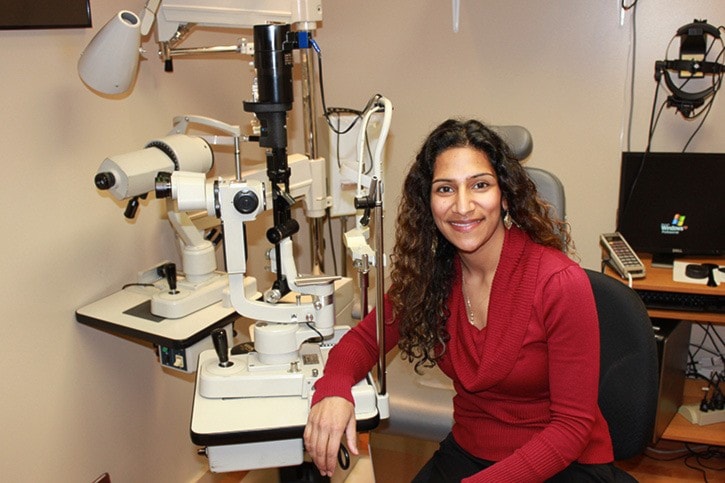Stephanie Lanni is a focused young girl who enjoys learning, but it wasn’t always easy.
Since moving to Victoria from Ontario with her family two years ago, Stephanie, 8, had trouble keeping up with her classmates in terms of reading and writing.
Last year, her Grade 2 teacher at St. Margaret’s School noticed Stephanie was reversing letters and numbers and had difficulty with spacing between words.
Having read about vision therapy in a magazine article, Stephanie’s teacher recommended it to her mother, Lucy Reus-Lanni.
Vision therapy helps patients who have trouble focusing and tracking their eyes, as well as depth perception.
“We went for an assessment and they said it was something called exotropia, where one of the eyes was looking the other way,” said Reus-Lanni.
Stephanie started attending vision therapy once a week at Family Eyecare Centre in May. In addition, she gets help from the learning support team at her school two days a week.
“She has always loved school, but I was worried that something like this might dampen her enthusiasm for it,” said Reus-Lanni.
At school, Stephanie uses a slanted board on her desk to aid with her schoolwork.
“Research indicates that an angled desk at 20 degrees is actually optimal for handwriting and learning and reading,” said Reus-Lanni.
Stephanie has noticed the improvement.
“It helps with my writing so it doesn’t be all messy,” she said.
Reus-Lanni said Stephanie’s handwriting has improved dramatically, but there have also been other notable changes, including her physical capabilities. For example, Stephanie is now able to jump rope now since she is able to track the rope with her eyes and jump over it in time.
The biggest improvement Reus-Lannui has noticed in her daughter is an increased confidence to try new things.
Seeing patients improve like Stephanie has means everything to Nazima Sangha, optometrist at Family Eyecare, and the vision therapist she works with.
“My therapist and I have shed a few tears for sure,” she said. “It’s a wonderful feeling to feel like maybe we can help somebody.”
Sangha became an optometrist in 2003, but she has only had her vision therapy program for the last two years.
During her clinical rotations at the Pacific University of Oregon, she saw kids who were being mislabeled as having hyperactivity disorder or other issues, when it fact it was their vision causing problems.
“We’d get their vision to function more efficiently or more optimally – it changed their whole learning outlook,” said Sangha, adding that 80 per cent of learning happens through vision. “So you can imagine if there’s a problem with your vision, that can really affect how well we learn.”
Sangha looks at patients’ ability to focus near and far and their ability to track and coordinate eye muscles.
“When we do therapy we look at where there’s inefficiencies [and] we try to train those activities,” said Sangha.
Typically, classes are 45 minutes to an hour long and run for 12 weeks to a year.
“At the end of the day it’s about how the patient is functioning,” said Sangha.
Getting kids eyes tested between the ages of six months and three years is crucial, because of how much visual development happens in kids’ eyes during that time, said Sangha.
If problems are able to be discovered early they are easier to resolve, said Sangha.
